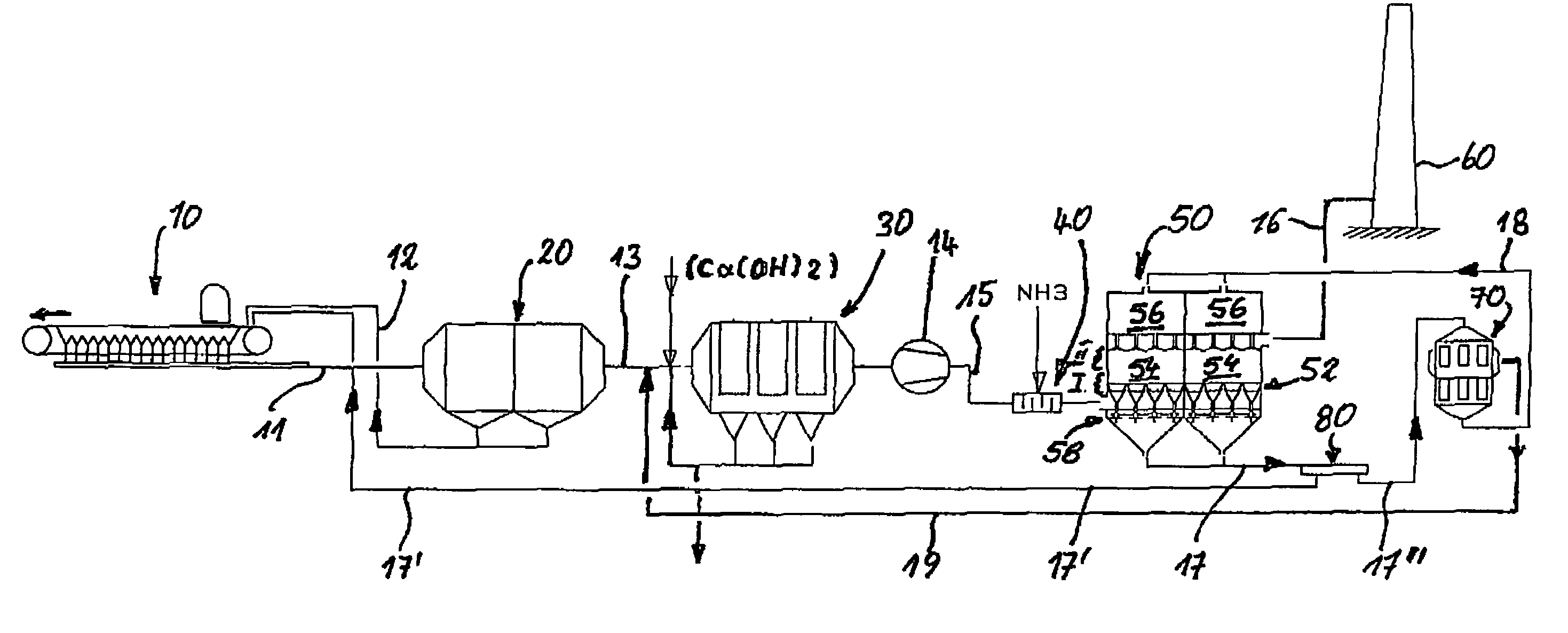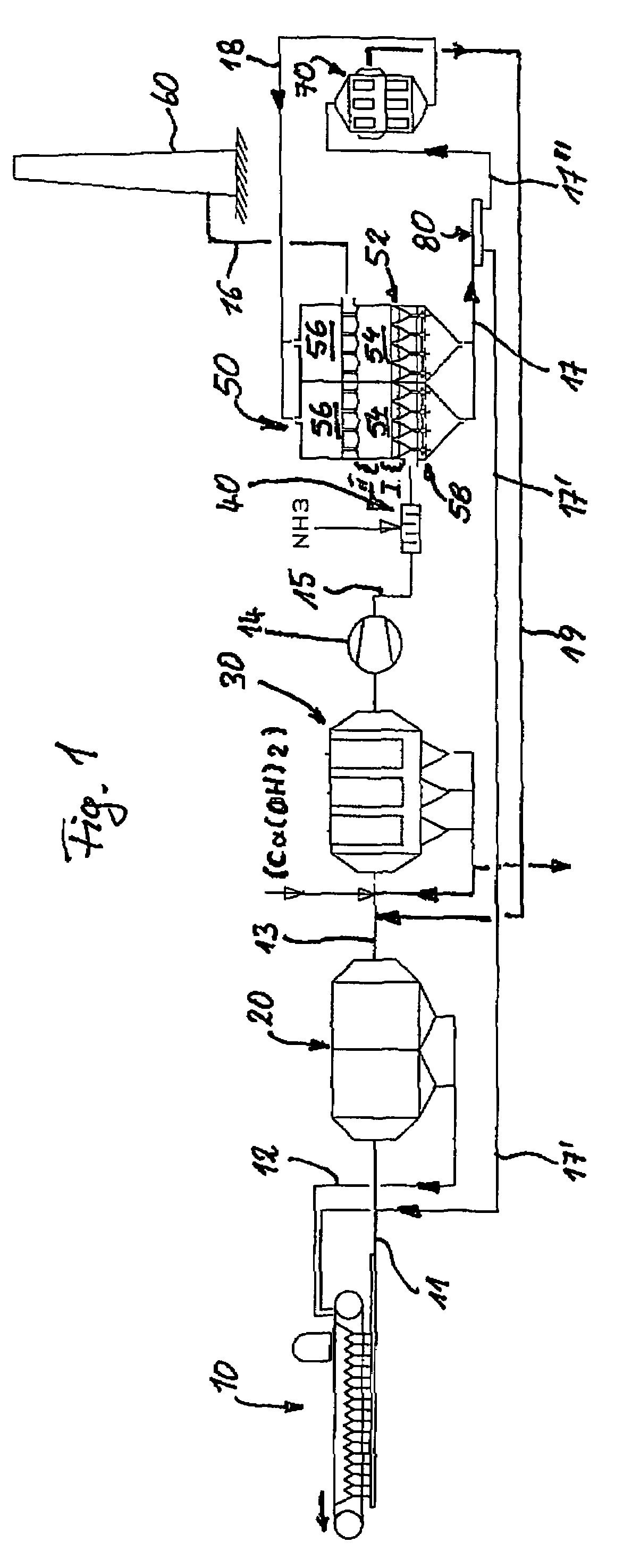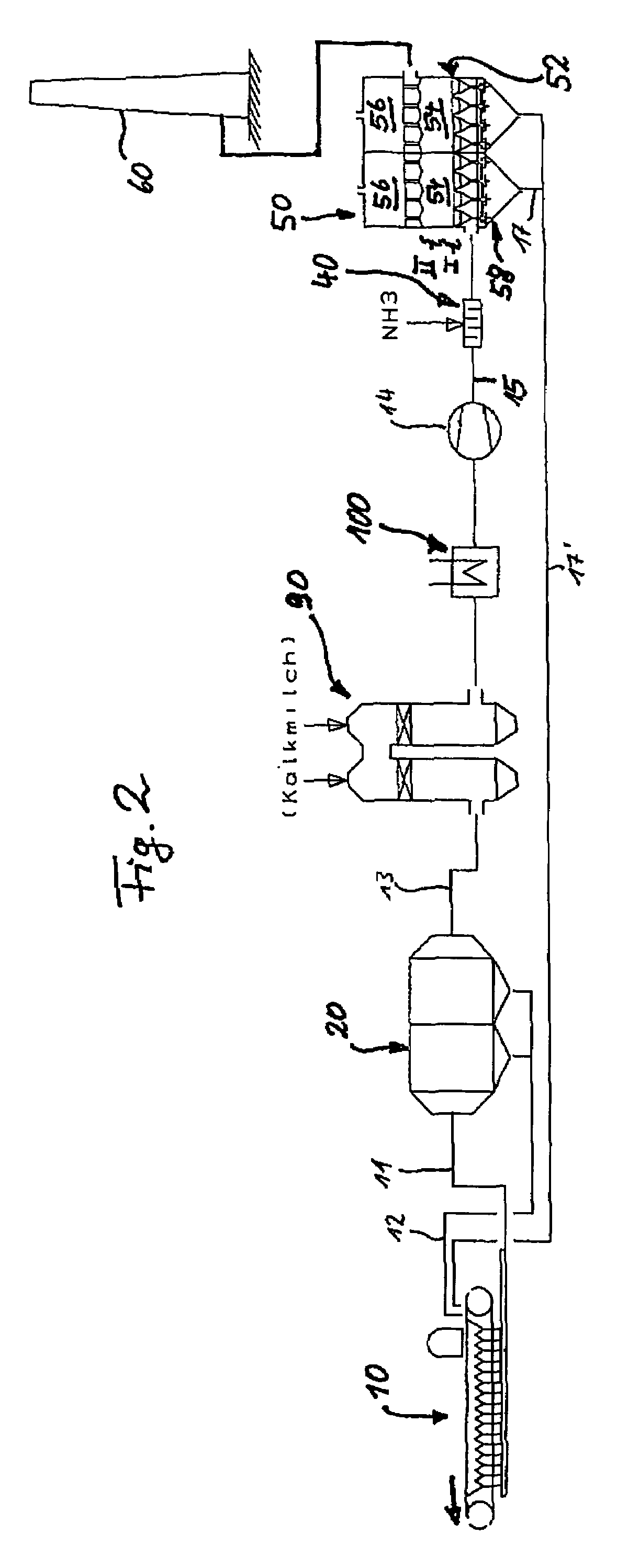Method for cleaning exhaust gases produced by a sintering process for ores and/or other metal-containing materials in metal production
a sintering process and exhaust gas technology, applied in the direction of inorganic chemistry, halogen/halogen-acids, dispersed particle filtration, etc., can solve the problems of destroying the structure of the catalyst, swelling of the catalyst, and expanding the crystal structure of the pore system, so as to reduce or largely eliminate the catalyst-degeneration effect and simplify the process
- Summary
- Abstract
- Description
- Claims
- Application Information
AI Technical Summary
Benefits of technology
Problems solved by technology
Method used
Image
Examples
Embodiment Construction
[0038]In the embodiment of FIG. 1, the exhaust gas created on a sintering belt is passed via a pipe 11 to an electrofilter, which is known in the art. The dust that is created thereby is returned to the sintering belt via a pipe 12. The exhaust gas escaping from the electrofilter is passed via a pipe 13 to a bag filter 30, which is known in the art, and calcium hydroxide is added to the exhaust gas from pipe 13 in order to form an entrainment cloud, so that much of the SO2 and HCl is bound to the calcium hydroxide. After recovery, particularly for improving the stoichiometric ratio, the filter cake that forms on the filter hoses may be reused by introducing it into the circuit and using some of it to create the entrainment cloud. A fan 14 arranged downstream of the gas outlet from bag filter 30 serves to ensure that pressure is increased sufficiently to enable the system to operate. The sintering exhaust gas escaping through pipe 15 is mixed in known manner with NH3 before it is fed...
PUM
| Property | Measurement | Unit |
|---|---|---|
| Temperature | aaaaa | aaaaa |
| Temperature | aaaaa | aaaaa |
| Temperature | aaaaa | aaaaa |
Abstract
Description
Claims
Application Information
 Login to View More
Login to View More - R&D
- Intellectual Property
- Life Sciences
- Materials
- Tech Scout
- Unparalleled Data Quality
- Higher Quality Content
- 60% Fewer Hallucinations
Browse by: Latest US Patents, China's latest patents, Technical Efficacy Thesaurus, Application Domain, Technology Topic, Popular Technical Reports.
© 2025 PatSnap. All rights reserved.Legal|Privacy policy|Modern Slavery Act Transparency Statement|Sitemap|About US| Contact US: help@patsnap.com



